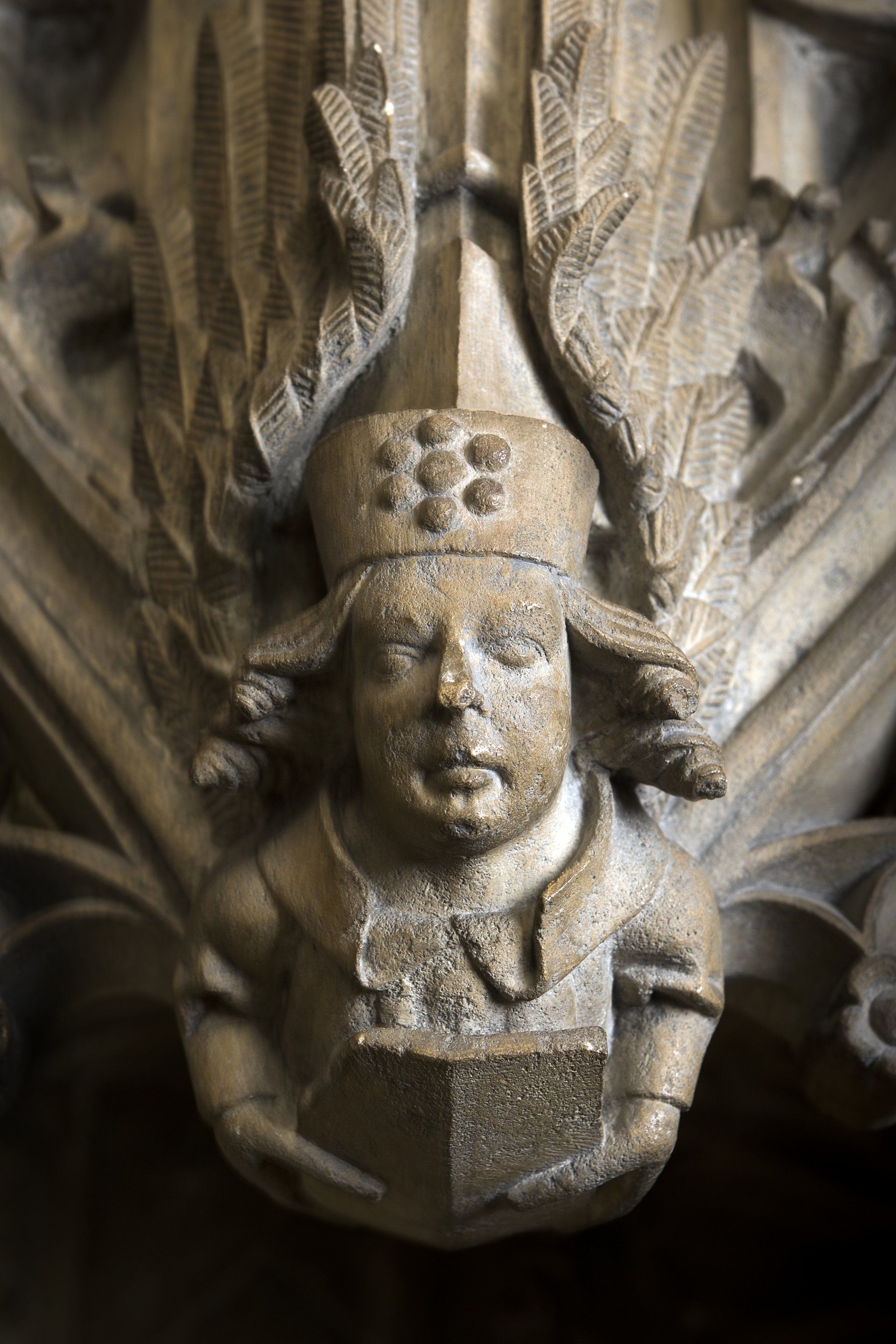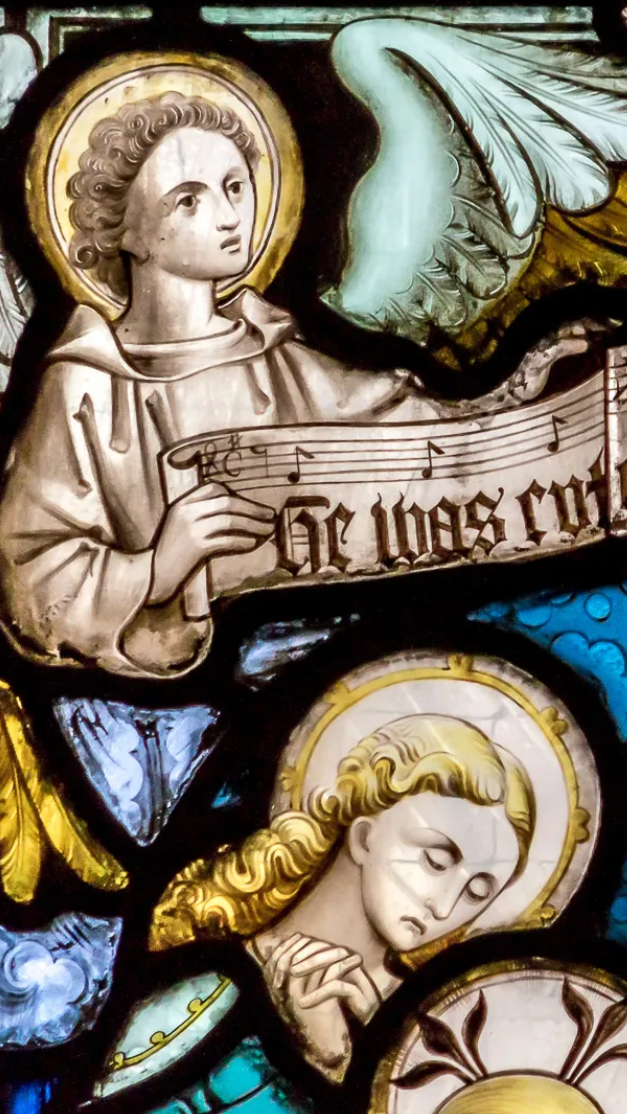The North Ambulatory
Mede, Hogarth and Handel
The ambulatory, an unusual feature in a parish church, allows visitors to follow a route behind the altar. Notice the organ console and pipes as you enter this area. An important feature is the C15th canopied tomb of the Mede family.
The organ
There have been a number of different organs in St Mary Redcliffe. The Harris & Byfield organ was 53 feet high and filled the west end of the nave:
The entrance into the church is at the great west door, to which you ascend by steps. The door is 8 feet in breadth and 12 high, within which is built a great stone gallery, on which is a grand magnificent organ, being in all 53 feet high from the ground to the top of the crown panel; the great case about 20 feet square, contains one great and lesser organ; the musical part executed by Messrs. Harris and Byfield, and the whole cost £846 7s.
History of Bristol, William Barrett (1789), p. 574.
The present instrument was designed especially for the building by Arthur Harrison, son of Thomas Harrison, the founder of the famous organ building firm of Harrison and Harrison. It was built between 1910 and 1912, cost £3,600, and was dedicated on 1 April 1912.
Arthur Harrison considered this instrument to be the "finest and most characteristic" of his work. It is widely regarded by experts as one of the most important instruments built in the early 20th century: "An organ of a unique and highly distinguished character. It is undoubtedly one of the finest romantic organs in the world.
There are four keyboards, a pedal board and 4327 pipes. The largest pipe is 32ft and the smallest a fraction of an inch.
The organ is an essential part of the church's renowned ministry of music and is used in liturgy and public worship.
Find out more about the history of organs at St Mary Redcliffe
The Mede Tomb
This is a canopied and buttressed double tomb of the Mede family. Made of limestone, it is of exceptionally fine quality. It dates from about the 1470s. This is all that remains of the Mede chantry, which stood before the altar of St Stephen, probably in this same location.
To the left are two stone figures, one male the other female, both with heads supported by pillows and angels. The man's feet are on a Labrador sized dog, whilst the lady's rest on two smaller dogs. The fit is rather cramped and there are signs of structural damage when the figures were placed in this part of the tomb, suggesting perhaps that having once laid separately in the two sides, one was moved alongside the other to make way for a further family burial.
Two thirds of a brass fillet inscription to Thomas Mede remains on the front edge of the top slab of the tomb. In the back of the tomb is an armorial shield. Lyons (1717) described this as "Mr Thomas Mede and his lady, 1475". Pevsner concurred with that identification but his 1995 book, the architectural historian Michael Quinton Smith identified the tomb as belonging to Philip Mede (d 1471).
The brass plate at the back of the right hand side of the tomb is thought not to be in its original position. In the 18th century Lyons recorded this as "a tomb without date or inscription". A 19th century watercolour shows the plate in its current position. As to who it commemorates, views vary. Some experts suggest Richard Mede, Philip's son (d 1491) and his two wives, others suggest Philip Mede and his two wives or his one wife and his daughter.
The mystery may never be resolved!
Philip Mede was a successful and wealthy merchant. He was Lord Mayor of Bristol in 1459, 1462 and 1469, sheriff in 1455 and Bailiff of Bristol in 1445. In his will he requested to be buried in St Mary Redcliffe by the altar of St Stephen the Martyr, leaving twenty shillings to the Vicar's custody for necessary tithes and offerings.
The Handel Window
George Frederick Handel, composer (1685 - 1759)
No less an authority than Ludvig Von Beethoven said "Handel is the greatest composer who ever lived. I would bare my head and kneel at his grave".
The son of a German pastor, Handel secretly taught himself to play the harpsichord, in defiance of his father. Then, when he was taken on a visit to the court of Saxe-Wesissenfels, the seven year old gained access to the chapel organ. His playing was overheard by the Duke who insisted that the talented young musician should receive a musical education.
Although for a while he obeyed his family's intentions for him to be a lawyer, by studying law at the University of Halle, he abandoned those studies in favour of a post as a cathedral organist. So were laid the foundations for a glittering career as a cathedral organist, opera violinist and harpsichordist, court musician and a prolific and outstanding composer - his output included numerous orchestral works, 42 operas and 29 oratorios.
Handel made a visit to Britain in 1712 and was so popular with the monarch of the day, Queen Anne, and the public that he somehow forgot to go back to his post as Kapellmeister for the elector of Hannover. He was naturalised as British in 1727.
Handel became friends with the then Vicar of St Mary Redcliffe, Thomas Broughton, and probably visited him here. So, one of England greatest composers may have played the Harris and Byfield organ that was fitted in this church at that time. Some of its pipes are in the present Harrison and Harrison organ.
A window in the north choir aisle commemorates this wonderful composer. It was fitted in the church to commemorate the centenary of his death. Shown in this window are musical phrases from one of Handel's greatest works, the Messiah, which tells the life story of Jesus Christ from birth, through death to his glorious resurrection.
There are five sheep in the Handel window - four white ones and one brown one. Four angels are playing musical instruments in the window - the instruments are a lute, a lyre, a dulcimer and a violin.
The lute has its origins in the Middle East. It became very popular in Renaissance Europe.
Dulcimers are very ancient stringed musical instruments, with origins over 1,000 years ago in Arabia and Byzantium. They are stil in regular use in parts of China and India, as well as eastern European and Middle Eastern countries (especially Iran and Iraq) but are not common in Western Europe, which focused on the piano once that was invented. Dulcimers come in a variety of sizes and shapes but most are trapezoidal in shape.
Byzantine style icon
The modern icon was painted specifically for St Mary Redcliffe by the artist Peter Murphy.
Peter uses traditional techniques from medieval religious painting, including egg tempera paint and gold leaf. He is a member of The British Association of Iconographers, Peter has
created icons specifically commissioned by a number of other churches in the UK, including Tewksbury Abbey and Hereford Cathedral.
In this icon, the Virgin Mary is shown in the central panel, with St Nicholas and St Stephen to the left and St Catherine and St George on the right. All of these saints are significant to this church as it once had altars dedicated to them.
William Hogarth's Redcliffe Altarpiece
In 1755, St Mary Redcliffe commissioned the most famous English artist of the time, William Hogarth, to paint a great altarpiece for the church. The altarpiece was in the form of three huge canvases that were displayed above the altar, which had been moved back one bay in 1709, blocking the entrance to what is now the Lady Chapel. A commemorative floor plaque near the entrance to the chapel indicates the position of the altar, above which was hung the central panel.
On 28 May 1755, The Vestry* met to discuss the commission of a new altarpiece to replace one that had been painted by John Holmes in 1709.
Following their deliberations, Vestry members decided:
That the Altar Piece of the Parish Church of St Mary Redcliff be new painted and that Application be made to Mr Hogarth to know whether he will undertake to paint the same and to desire him to come from London to survey and make an Estimate thereof. And it was also ordered that the present Churchwarden Mr Nathaniel Webb shall pay in the Expences of his Journey provided He shall not think proper to undertake the said Painting.
It is not known why Hogarth was chosen. A connection may have been made through the then Vicar of Redcliffe, Rev Thomas Broughton, a polymath* and nephew of the landscape and sporting painter John Wootton, for whom Hogarth had painted heads* in the 1730s. Broughton's tomb slab can be seen in the floor in front of the Handel Window.
Broughton - author of the Historical Dictionary of all Religions from the Creation of the World to the Present Times (1742) and translator of Voltaire, who also contributed the lives marked ‘T’ in the original edition of the Biographia Britannica (1763) - had written a libretto for Handel, whom Hogarth knew through their mutual involvement in the Foundling Hospital.
Here, at least was a commissioner, and an anglican clergyman at that, who believed in Hogarth’s variety, but also that aspect of Hogarth’s work that was essentially moral, educational, even spiritual, as well as entertaining in purpose - his own style of ‘parabolic’ teaching.
Riding, J. (2022) “Chapter 8 - Original Genius,” in Hogarth - life in progress. London: Profile Books, p. 408.
The commission was accepted and Hogarth set to work in London. In July of the following year, the paintings were delivered to Bristol. On August 4, Hogarth signed a receipt for £525, still held in Bristol Archives.
The total cost of the altarpiece - including frames and installation - was £761-6s-4d - around £130,000 today.
To find out more about Hogarth's altarpiece download St Mary Redcliffe & William Hogarth
The cope chest
To the right of the Lady Chapel is a large semicircular piece of wooden furniture. This is the cope chest, in which the beautiful embroidered copes are stored. A cope is a cloak like garment worn by the priests on festivals. The chest was made and purchased in 1932. The maker was a local firm, Ganes (who had premises at College Green). The wood is oak.


